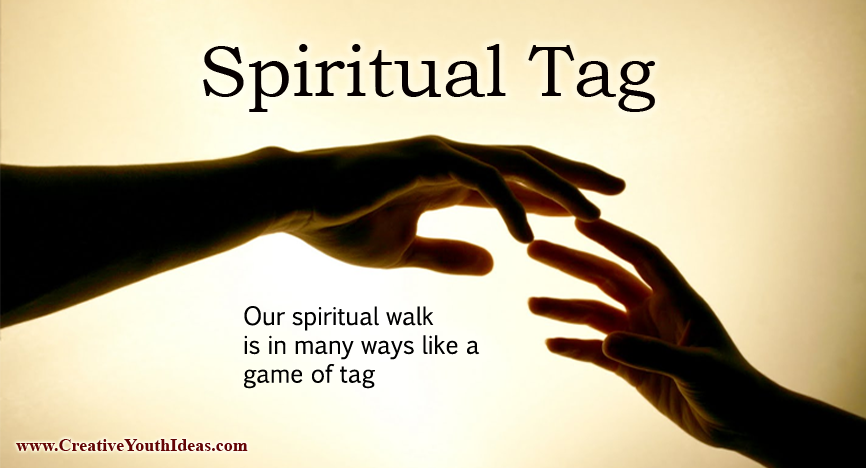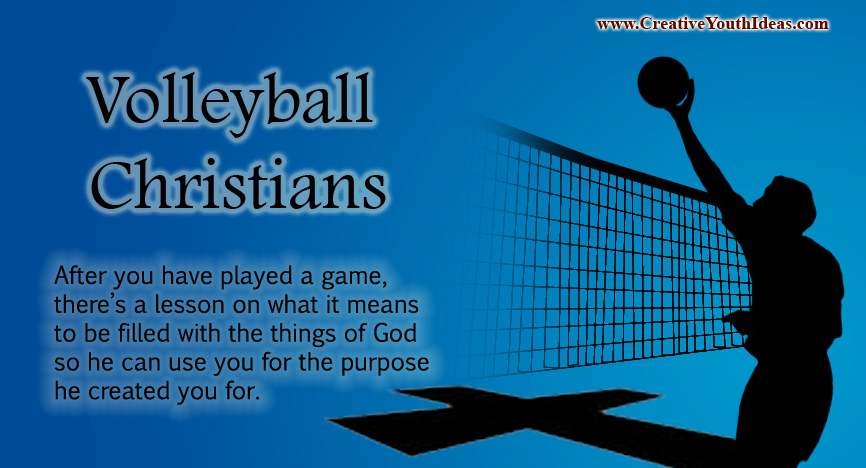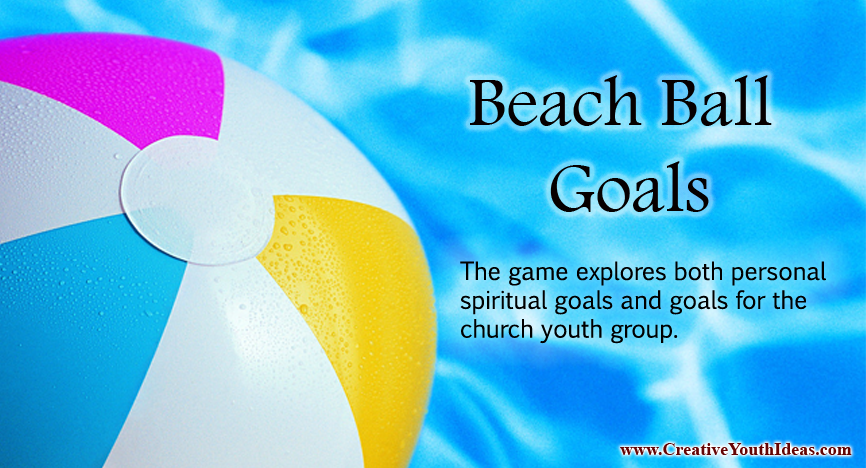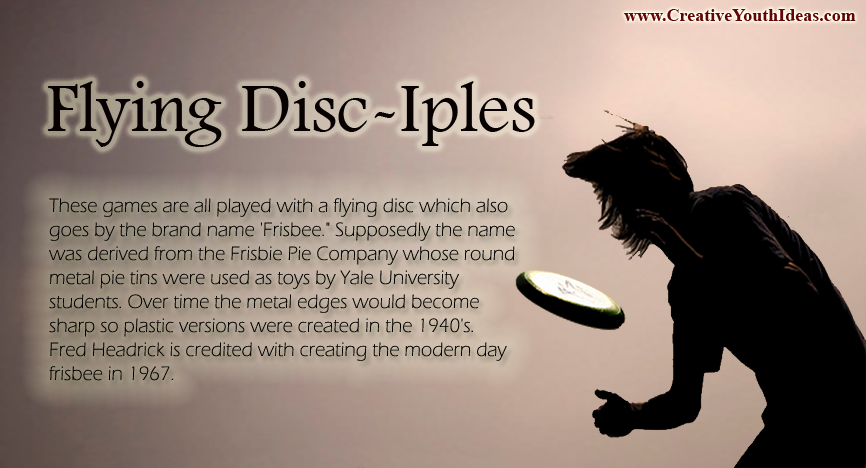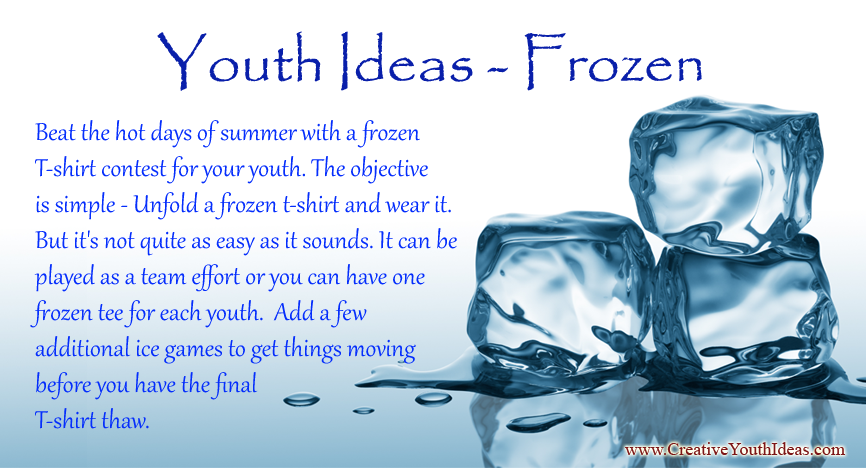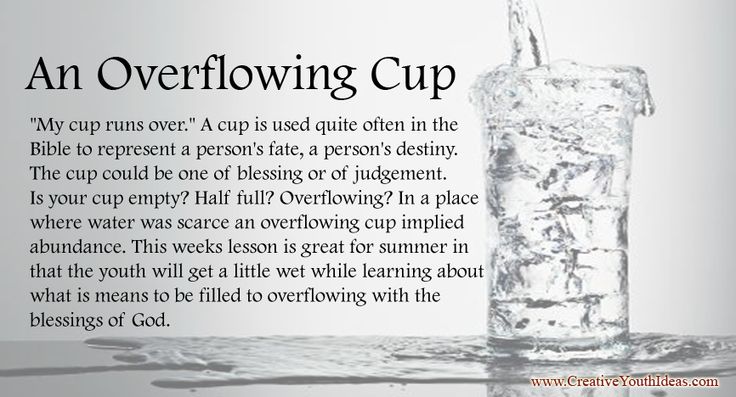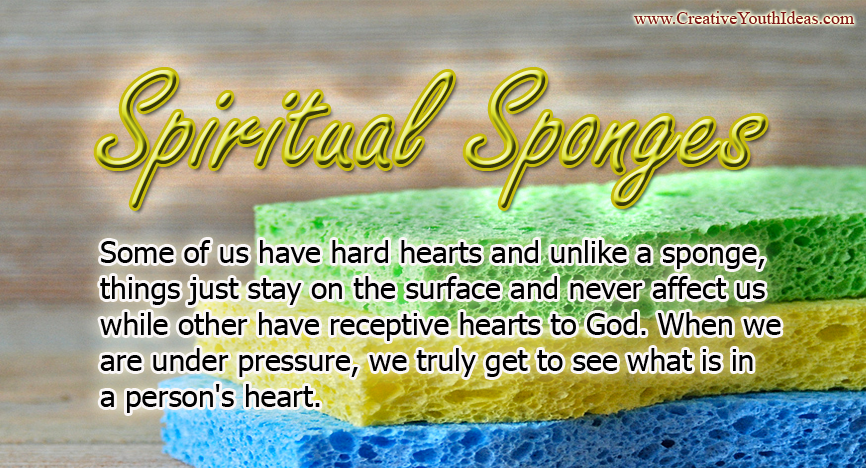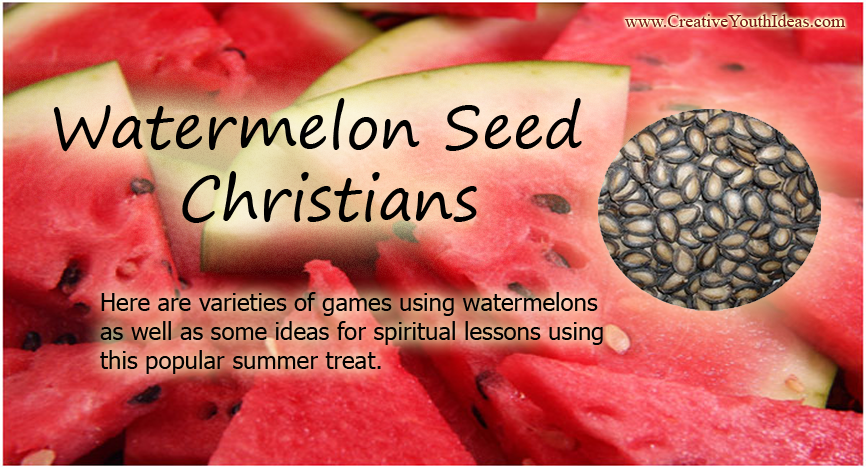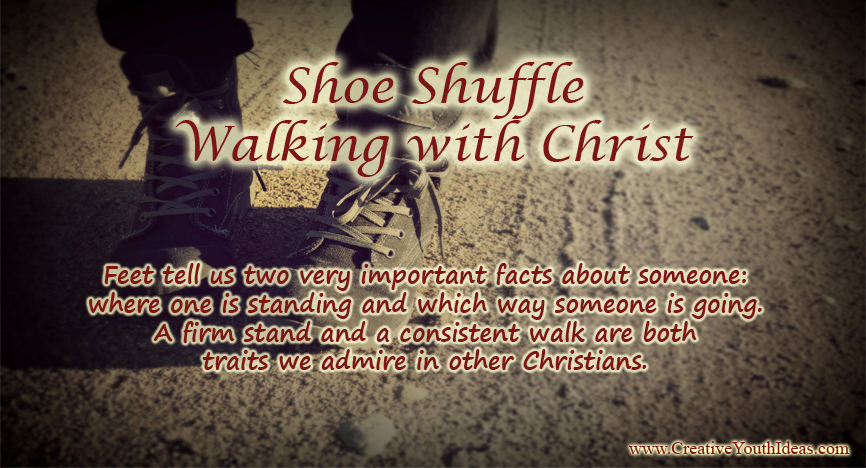Our spiritual walk is in many ways like a game of tag. There are three key components to any game of tag: 1) You chase or pursue 2) You flee or run away 3) People get tagged. Spiritually, because of our disobedience to God we are tagged as sinners. And like those in the game we are stuck in our current position and unable to break ourselves free. Only when Jesus frees us are we able to be truly free. Unfortunately, sin often touches our lives again and we find ourselves back in the same condition. Because of this the Bible gives us a number of things we should flee. But at the same time it gives us things we should chase after, things we must pursue. So are you ready for a game of tag?
PLEASE SHARE THIS IDEA ON FACEBOOK – CLICK HERE
Games of Tag
- Amoeba Tag – Begin with two youth who hold hands and chase the rest of the participants. Any person they catch joins the chain by linking hands to form a bigger circle. When another person is caught the whole group can stay together as one or split into two circles with 2 youth in each circle. Amoeba’s can only split on on even numbers and can link together back together any time. Play the game until no one is left or award the last person as the greatest survivor!
- Back to Back Tag – Two youth hold join one set of hands and then try to tag any other player using only their free hands. When they tag someone, that person joins onto them by holding hands. You’ll eventually have a long line of youth holding hands with a person on each end with a free hand. Remember, they can only tag someone with the free hands on each end. Players can make themselves safe from being tagged by finding another youth and standing back to back with them. The maximum time they can stand back to back is 10 seconds and then they can be tagged again. The game continues until everyone is tagged.
- Bandage Tag – When tagged you must cover your “wound” with one of your hands. When you get tagged a second time, you must cover your “wound with your remaining hand. The third time you are tagged, you are out. In another variation, whatever limb is tagged becomes numb and you cannot use it and must keep it straight. If you ran out of forearms, shoulders, and legs, you have to lie there, until someone tags you and then you are completely out of the game. Variation: Two other people come over to a person who is injured and “operate.” The two other people need to tag the frozen person at the same time and count to five and the other person is fully healed.
- Bump Tag – Have each youth buddy up with a partner and spread out in pairs. One person is it and another is the runner. While being chased, the runner can go up to another pair of buddies, and “bump” one person by grabbing an arm on either side of the pair who is holding hands. The other buddy then is released from that pair, and becomes the new person being chased. If the person who is IT tags the RUNNER, they immediately switch roles, and the original runner now tries to catch the original “it.”
- Bumper Tag – You can play any variation of tag, but instead of tagging other youth with your hands, you must tag with your hips. Only a small bump is allowed to avoid injuries.
- Cooperation Tag – In this variation of tag, whoever is it, chases people and tries to tag them. But a person is safe from being tagged if they are holding a special object (one or more rubber chickens or some other unusual object works great!) if anyone is tagged and is not holding the special object they become it and the game continues.
- Cyclops tag – Everyone has to play tag with one hand covering an eye.
- Dead Ant – When someone is tagged, that youth must lay down with both hands and feet sticking straight up, like a dead ant. But the youth can bring a dead ant back to life by have four people each taggin one of the outstretched limbs. Once someone has been a dead ant 3 times they become “it”. It is possible to have multiple people become “it” which adds another dimension to the game because it becomes confusing who you need to run from.
- Dragons Tail – Split the youth into teams of six to eight persons who will form a dragon by hanging on to the waist of the person in front of them. The object of the game is for the head on one dragon who has his.her hands free to tag the tail of another dragon. The rest of the people in the team try to protect the tail without letting go of the person’s waist in front of them. If a dragon breaks they are out. if a tail is tagged that team is out.
- Everybody’s it – Proclaim, “everybody’s it!” in an open space and the participants begin trying to tag others, while avoiding getting tagged. If someone is tagged they must sit down where they are. Once sitting down, they can extend their arms and try to tag those left running around. If they manage to do so they can join back in the game. If two person’s tag another person at the same time, they both must sit down.
- Freeze Tag – This common game of tag, forces a person to freeze in place, when tagged. Other people who are not frozen can unfreeze a person by tagging them.
- Giants, Wizards and Elves – Split the youth group up into 2 teams. You will also need a safe area for each team with a no man’s zone in the middle. Each team huddles up and picks what they want to be as a team, a giant, a wizard or an elf. Giants put their hands up over their heads making them taller, wizards put their hands our straight in front of them wiggling their fingers, and elves make pointy ears on their head with their pointer fingers. One a team has decided, they line up face to face with the other team in the middle area, then on a count of 3, everyone does whatever action their team picked. Giants beat elves, elves beat wizards and wizards beat giants. The winning team chases the other and tries to tag as many members on the other team as possible before they reach the safety zone. Anyone who is tagged becomes a part of the other team until everyone is on one team.
- Heads and Tails – Make a Giant coin from a frisbee, paper plane or garbage can lid. mark it so that it is clear which side is heads and which side is tails. This is played like Giants Wizards and Elves but one team is heads and the other is tails. Whoever wins the toss chases the other team to tag them.
- Hug Tag – This is your classic tag game with one exception, people are only safe if they are hugging someone else. You can only remain in a hugged position for 5 seconds.
- Loose Caboose – Split the class into teams of 3 or 4 youth. Select 1-3 players to each be a “Loose Caboose.” (these players will be playing as individuals and do not have a team at the start of the game). The teams of four form a train by placing their hands on the hips of the player in front of them. On the signal, each “Loose Caboose” will attempt to run and latch on the back of another train (the trains are trying to keep this from happening). If a “Loose Caboose” is successful in latching on to a train, the engine (front person) must leave the train and become the new “Loose Caboose” and attempt to join onto a new train. You can play this game for a given time period and not worry about winners.
- Meltdown Tag – Whenever a youth is tagged, they must begin to “melt down” by slowly lowering themselves to the ground over the time period of ten seconds. If they are touched by another player before they reach the ground they are free. If they melt all the way to the ground then they become another “it”. Play continues until only one person is left.
- Secret Tag – Call three youth to the front and whisper a position in the ear of each person. One person is “It”, another is “normal”, and another person is “the doctor” who can rescue those who are tagged to put them back into the game.
- Slow Motion Tag – Ask each player in the group to find their own personal space within the boundary area. Make sure there is enough room so no one is able to take one step towards someone and tag them. Every time you call out “step” every player moves ONE of their feet in any direction they want. The objective here is to tag other players any where below the neck. When tagged, you must sit down right where you are to become an “ankle biter.” Ankle biters can only tag others below the knee. Play down to the last two players.
- Toilet Tag – When someone is tagged, they must squat down to form the “toilet” and hold one hand out to the side, like the “handle”. To get back into the game, someone must “flush” the frozen person and make a loud “Woooooosh” sound.
- Triangle Tag – Begin with groups of four to five people in small groups and one person alone who is “it.” Within each group one person is chosen to be in the center and the others hold hands and form a circle around the chosen one. When play begins, the person who is “it” will try to identify and tag the person inside a circle. The other players will twist and turn to try to protect the person in the middle from being tagged. The circle must always remain intact. If the protected person gets tagged, everyone changes groups and the tagged person becomes it.
- Tunnel Tag – Whenever someone gets tagged, they become frozen until someone, who has not been tagged, crawls through their legs.
- Watch-Your-Back – The object of the game is to tag as many people as you can without getting tagged yourself. When tagged drop one knee and freeze. But if the youth who tagged you gets tagged you can get up and start tagging again.
TAKE IT TO THE NEXT LEVEL
There are three key components to any game of tag:
- You chase or pursue
- You flee or run away
- People get tagged
MAKE IT SPIRITUAL
In life, we may sometimes be pursued or chased and at other times we may be doing the pursuing.
- What are some things that we pursue in life?
- What are some things we flee?
- What are some things that we get tagged with?
Verses
- In 2 Timothy 2:22 we read “Flee the evil desires of youth, and pursue righteousness, faith, love and peace, along with those who call on the Lord out of a pure heart.”
- 1 Timothy 6:9-11 – “Those who want to get rich fall into temptation and a trap and into many foolish and harmful desires that plunge people into ruin and destruction. For the love of money is a root of all kinds of evil. Some people, eager for money, have wandered from the faith and pierced themselves with many griefs. But you, man of God, flee from all this, and pursue righteousness, godliness, faith, love, endurance and gentleness.”
Tagged – In many tag games, once you are tagged you are either out of the game or stuck until someone frees you. As God’s creation we’ve also been tagged – not by a person, but by our actions. Because of our disobedience to God we are tagged as sinners. And like those in the game we are stuck in our current position and unable to break ourselves free from the oppressions in our lives. Only when Jesus frees us are we able to be truly free. Unfortunately, sin often touches our lives again and we find ourselves back in the same condition. Jesus says, “So if the Son sets you free, you will be free indeed.” (John 8:31-36) True freedom comes from being set free by Jesus Christ. True freedom is freedom to be myself as God made me and meant me to be. This freedom comes only when we completely surrender ourselves to Jesus and invite Him to be our Lord and Master of our life.
- I John 5:8 – “We know that no one who is born of God sins; but He who was born of God keeps him, and the evil one does not touch him.”
Flee – In tag games, you must flee. In these games we flee from someone who is “it”. James 4:7 says “Submit yourselves, then, to God. Resist the devil, and he will flee from you.” So when we pursue God and resist the devil we need not flee. In fact he will flee from us. But the scriptures are also full of things we should flee from so we are not touched again by sin.
Here are some of the things the Bible says we should flee
- Fornication (1 Corinthians 6:18)
- Idolatry (1 Corinthians 10:14)
- Love of money (Mammon) (1 Timothy 6:11)
- Youthful lusts (2 Timothy 2:22)
- All appearances of evil (I Thessalonians 5:22 TLB)
Pursue – Another aspect of tag, is that when you are chosen to be it, you must chase after others. Scripture also gives us some things we should pursue.
Here are some of the things the Bible says we should pursue.
- Love – 1 Corinthians 14:1
- Peace – 1 Peter 3:11; Psalms 34:14
- Righteousness, piety, faith, love, endurance, meekness – 1 Timothy 6:11
- Righteousness, faith, love, and peace – 2 Timothy 2:22
- Peace, Holiness – Hebrews 12:14
- Prize – Philippians 3:12-14
- Righteousness – Proverbs 15:9; Romans 9:30-32; Isaiah 51:1
- Peace, Things that build others up – Romans 14:19
- To Know God – Hosea 6:3
MAKE IT PRACTICAL
- Which of those things we are told to pursue do people find difficult? Why?
- What stops people from pursuing these things of God?
- When you think about your relationship with God – faith, endurance, righteousness, piety and holiness, how do you think you measure up?
MAKE IT PERSONAL
- What are you currently pursuing?
- How can you direct that pursuit in a way that is honoring to God?
- In what areas does your life – thoughts, attitudes, actions – need improvement?
SCRIPTURE
- “Pursue love, yet desire earnestly spiritual gifts, but especially that you may prophesy.” – 1 Corinthians 14:1 (NASB)
- “They must turn from evil and do good; they must seek peace and pursue it.” – 1 Peter 3:11 (NIV)
- “But you, man of God, flee from all this, and pursue righteousness, godliness, faith, love, endurance and gentleness.” – 1 Timothy 6:11 (NIV)
- “Flee the evil desires of youth, and pursue righteousness, faith, love and peace, along with those who call on the Lord out of a pure heart.” – 2 Timothy 2:22
- “Pursue peace with all men, and the sanctification without which no one will see the Lord.” – Hebrews 12:14 (NASB)
- “Not that I have already obtained all this, or have already arrived at my goal, but I press on to take hold of that for which Christ Jesus took hold of me. Brothers and sisters, I do not consider myself yet to have taken hold of it. But one thing I do: Forgetting what is behind and straining toward what is ahead, I press on toward the goal to win the prize for which God has called me heavenward in Christ Jesus.” – Philippians 3:12-14 (NIV)
- “What then shall we say? That the Gentiles, who did not pursue righteousness, have obtained it, a righteousness that is by faith; but the people of Israel, who pursued the law as the way of righteousness, have not attained their goal. Why not? Because they pursued it not by faith but as if it were by works. They stumbled over the stumbling stone.” – Romans 9:30-32 (NIV)
- “So then we pursue the things which make for peace and the building up of one another.” – Romans 14:19 (NASB)
- “Let us know, Let us pursue the knowledge of the Lord. His going forth is established as the morning; He will come to us like the rain, Like the latter and former rain to the earth.” – Hosea 6:3 (NKJV)
PLEASE SHARE THIS IDEA ON FACEBOOK – CLICK HERE
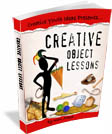 MORE IDEAS? See “Creative Object Lessons”
MORE IDEAS? See “Creative Object Lessons”
200 page e-book that explains everything you need to know when planning your very own object lessons. It contains 90 fully developed object lesson ideas and another 200 object lesson starter ideas based on Biblical idioms and Names / Descriptions of God.
![]()

